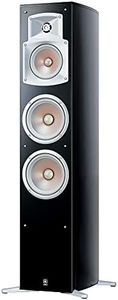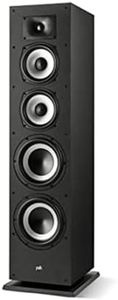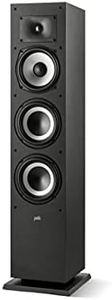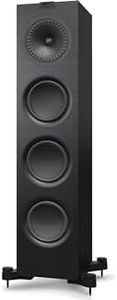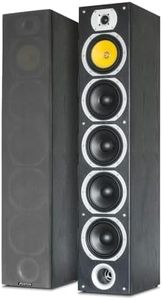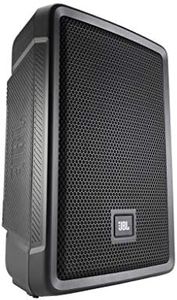We Use CookiesWe use cookies to enhance the security, performance,
functionality and for analytical and promotional activities. By continuing to browse this site you
are agreeing to our privacy policy
10 Best Floorstanding Speakers
From leading brands and best sellers available on the web.Buying Guide for the Best Floorstanding Speakers
Choosing floorstanding speakers can be a rewarding experience, especially if you want to create a rich, immersive sound in your living room or entertainment area. These speakers are typically larger and offer fuller sound compared to bookshelf or compact speakers. Before starting your search, think about your listening habits, room size, and what you expect from your audio experience. Understanding the main specifications will help you make a more confident decision.Speaker Size and HeightSpeaker size and height refer to the physical dimensions of the floorstanding speaker. Larger speakers usually house bigger drivers and may produce deeper bass, which is especially beneficial in larger rooms. Smaller speakers might fit better in tight spaces but could have more limited bass response. If you have a big open area or want theater-like sound, opt for taller, more substantial speakers. For smaller or multipurpose rooms, more compact towers may be a better match.
Number of Drivers and Driver TypesDrivers are the individual speakers inside the cabinet, each responsible for producing different frequencies (bass, midrange, treble). Floorstanding speakers can have two-way, three-way, or even four-way designs, with more drivers typically handling a wider range of sound more clearly. For casual listening, two or three drivers may be enough. If you want more detail or plan on critical listening, look for more driver types, such as separate tweeters, midranges, and woofers.
Frequency ResponseFrequency response tells you how low and high the speaker can play, measured in Hertz (Hz). A wider frequency range usually means the speaker can produce deeper bass and clearer treble. For most music lovers, speakers that reach down to around 40 Hz can produce solid bass, while extending up to at least 20,000 Hz ensures crisp highs. If you want thunderous bass or listen to a lot of bass-heavy music, seek out speakers with a lower minimum frequency, but for general use, a standard wide response is sufficient.
SensitivitySensitivity, measured in decibels (dB), indicates how loud a speaker will play from a given amount of power. Higher sensitivity means the speaker is more efficient and can play louder with less power from your amplifier. Sensitivity ratings usually range from about 85 dB to over 90 dB. If your amplifier isn’t very powerful, choosing speakers with higher sensitivity (90 dB or higher) can help you get more volume without distortion. If you have a powerful amplifier, sensitivity is less of a concern.
Power HandlingPower handling tells you the amount of amplifier power (watts) a speaker can safely use. It's usually listed as both a continuous (RMS) and a peak value. If you listen at moderate levels or have a small to medium-sized room, most modern floorstanders’ power ratings will be sufficient. If you want room-filling sound in a large space or plan to play music at high volumes, look for higher power handling capabilities to ensure consistent and safe performance.
ImpedanceImpedance, measured in ohms, describes the electrical resistance that the speaker presents to your amplifier. Common values are 4, 6, or 8 ohms. Most home amplifiers work well with 8-ohm speakers. If you’re matching with specialized or high-end amplifiers, you can consider lower impedance models. Make sure your amplifier is compatible with the speaker’s impedance to avoid performance issues or damage. For most users, sticking with 6–8 ohm speakers is a safe choice.
Cabinet ConstructionCabinet construction refers to the materials and design of the speaker's enclosure. Well-built cabinets minimize unwanted vibrations and improve sound clarity. Look for cabinets made from sturdy, high-quality materials and consider features like internal bracing or vibration damping feet. If you want the purest sound or have hardwood or echoey floors, pay extra attention to construction details to minimize unwanted noise or resonance.
